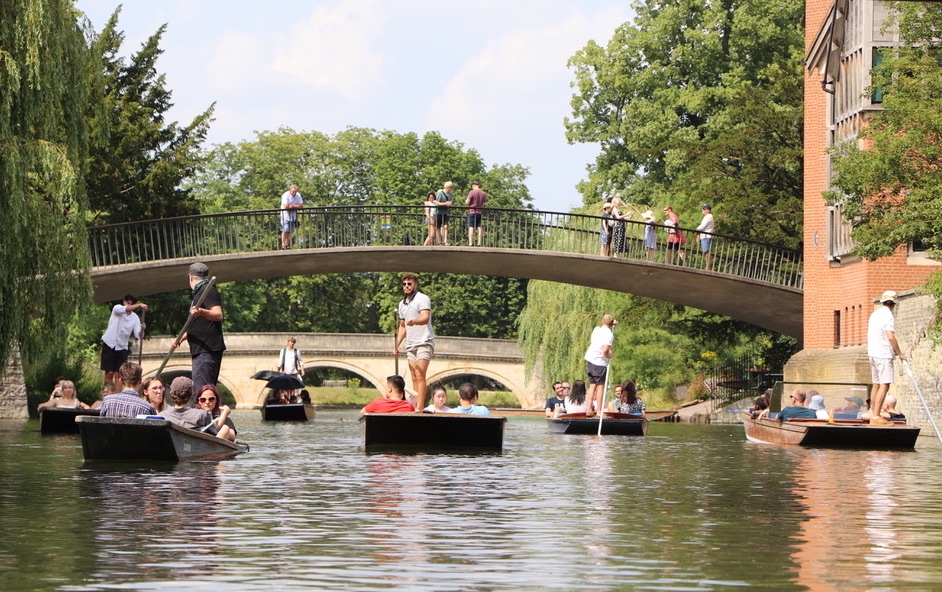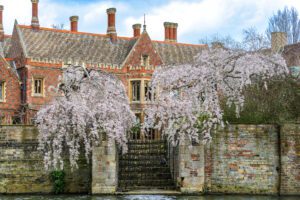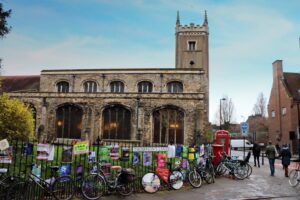Cambridge and academic excellence have a symbiotic relationship as the city has been called ‘home’ by some of the most exhilarating minds in recent history. Each year the city of Cambridge and its namesake university attracts nearly 10 million tourists, which is understandable given its 800-year rich cultural history.
The University’s alumni proudly boasts some of the most influential figures in science, mathematics and literature with the University being one of the most well known institutions in the world.
If you haven’t heard the name ‘Oppenheimer’ floating about in recent months, you honestly must be living under a rock. Christopher Nolans’ biopic chronicles the life and work of renowned physicist Robert J Oppenheimer. The film has been hotly anticipated since images first emerged of filming in early 2022. Since its release on the 21st of July the film has dominated headlines of oscar buzz for lead actor Cillian Murphy.
On this note it is pretty apt then to take a look back at Robert J Oppenheimer’s links to Cambridge as well as other well-known established bodies that studied here.
The Father of the atomic bomb: Robert J Oppenheimer’s

Born in New York in 1904, Oppenheimer was a theoretical physicist, a science administrator and director of the Los Alamos Laboratory for government officials. After the launch of the ‘Manhattan project’ in 1942 Oppenheimer was in charge of exploring the possibility of building an atomic bomb, and after successfully building one in 1945 he was known as the “father of the atomic bomb”.
In 1947 after resigning his position in the project he became head of the Institute for Advanced Study, and served as chairman of the General Advisory Committee of the Atomic Energy Commission until 1952. However, in a security hearing he was notified by military officials that his position and clearance would now be revoked due to his prior ties with the communist party and his testimony against the production of the hydrogen bomb. He eventually died in 1967 from throat cancer in New Jersey.
Atomic physics and Cambridge University: Robert J Oppenheimer
In 1924, Robert J Oppenheimer was offered a place at Christs College and after graduating in 1925 he sailed to England to conduct his research at the Cavendish Laboratory. Although he only stayed at Cambridge University for two semesters, as he believed he was better suited to theoretical and not experimental physics. However, Oppenheimer still rubbed shoulders with some of the most instrumental figures within the scientific community. Such figures included the likes of the nobel prize winner Ernst Rutherford who supervised Oppenhiemer during his time at Cambridge; JJ Thompson (who discovered the electron) who taught Oppenheimer and James Chadwick (who discovered the neutron within the atom). Such established physicists are also mentioned on our guided punting tours if ever you want to hear more about them on a personal level.
The Father of Nuclear Physics: Ernest Rutherford

Born in August 1871, New Zealand, Rutherford was a promising student from a young age as he had received a double first in Mathematics and Physical Science in 1893 and was also awarded an 1851 Exhibition Science Scholarship allowing him to study at Trinity college at Cambridge University under the supervision of J.J Thompon, which is one of the colleges that our tours pass on the river.
By 1919 he succeeded Sir Joseph Thomson and accepted an invitation as Cavendish Professor of Physics at Cambridge University. His work is idealised in the scientific community and some of the thesis he has published include the Magnetization of Iron by High-Frequency Discharges and Magnetic Viscosity. His work also includes the invention of an electromagnetic wave detector, the discovery of nuclear atoms and the existence of alpha and beta rays in uranium radiation.
It is worth mentioning Rutherford also published several books including Radioactivity; Radioactive Transformations; The Electrical Structure of Matter and The Artificial Transmutation of the Elements, to name a few. He died in Cambridge in October 1937, but his name and the history of his time at Cambridge university is referenced in our tours to commemorate his success in the evolution of the scientific community.
Pioneering minds: Stephan Hawking

Stephan William Hawking was born January 1942 and sadly died in March 2018 in this very city. He is arguably the most renowned physicist to study at Cambridge University due to his work on general relativity, black holes, quantum mechanics and his work on space-time singularities. Although he received his bachelors at Oxford he conducted his PHD at Trinity Hall which again can be seen and is rigorously mentioned in our punting tours.
He became professor of gravitational physics at Cambridge in 1977 and was appointed Cambridge’s Lucasian professorship of mathematics, whose predecessor was Sir Isaac Newton himself. His other titles include being made a Commander of the Order of the British Empire in 1982 and a Companion of Honour in 1989. He also received the Copley Medal from the Royal Society in 2006 and the U.S Presidential Medal of Freedom in 2009.
Hawkins publications include The Large Scale Structure of Space-Time; Superspace and Supergravity; The Very Early Universe and the bestseller A Brief History of Time: From the Big Bang to Black Holes.
The scientist blueprint: Issac Newton

It is safe to say that Isaac Newton is recognized as the “Godfather” of physicists. He studied at Cambridge University and was born in January 1643 and was a culminating figure of the Scientific Revolution in the 17th Century. Born in Woolsthorpe Newton arrived in Cambridge in 1661 at 18 years old to enrol as a student at Trinity College, however the movement now known as the ‘Scientific Revolution’ was already advanced for its time. During his period of being an undergraduate Newton valued the ‘truth’ above anything and valued all of his predecessors in the same light in terms of academia.
During the plague years of 1665 Newton laid down the foundations of the ‘Calculus’ and built upon the nature of light, in that clear white light composes a visible spectrum of 7 different colours when refracted instead of just one, developing the study of ‘optics’. His work has had a significant impact on the scientific community and his most famous studies involved the laws of motion and the universal law of gravitation.
Newton wrote a total of fifteen books, of which eight he published himself during his lifetime and many of his original manuscripts were bought at auction in 1936 by an economist John Maynard Keynes who bequeathed the collection to Cambridge university. Some of these books include Principia : Vol. 1 The Motion of Bodies; Principia: Vol. II: The System of the World; Opticks; and his most renowned book Philosophiae Naturalis Principia Mathematica. Many of these original manuscripts are located at the Cambridge University Library, the Fitzwilliam Museum and the Wren library located next to the river Cambs, and can only be seen by Cambridge students and tourists who wish to punt on the river.
Punting in Cambridge
If you would like to hear more about some of these established figures and their time at Cambridge University on an informative level laced with their individual idiosyncrasies, then we would strongly recommend you book a punting tour with us for this experience.





